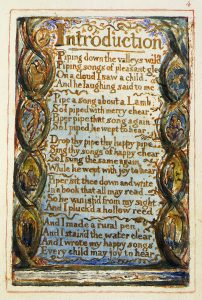These were the two questions that I came up with to prompt discussion for Plato’s “Republic”. Although the discussion went on a tangent, I record my initial train of thought below.
- What kind of society would we have today if Socrates’ censorship of heroes’ flaws or the god’s wrongdoings were employed?
Plato’s need for control parallels a very dictator-style rule that would be frightening to many of us today. Particularly, his strict restrictions on poems and other forms of creative freedom and expression would cause outrage among individuals today. The significant effects of creating a perfect society (Plato’s Kallipolis) would then mean the eradication of all existing humans who do not conform to Plato’s standards. As such, it seems evident that Plato’s ideals are far too theoretical to be actually carried out.
How true is this? In our current society, is there not already partial censorship of what type of person or body type is shown? Many studies have shown that exposure to television (and thus advertisements) have increased likelihood of developing depression and reducing self-esteem, especially in women. This warped ideal of a “beautiful” body today not only affects the viewers but also the models, many of which have to conform to unrealistic and possibly life threatening standards.
Arguably, censorship “for the greater good” has been used in the past as well – think back to Stalin’s cult of personality. Even today, South Korea has strict censorship over almost all aspects of life including television, journalism and the internet.
It is important to note that we are taking the extreme examples in an attempt to highlight what a Plato-esque rule may lead to, but to say that we have experienced a complete replication of Plato’s kallipolis wouldn’t be true. Perhaps we have, to some extent, already been under the heavy censorship that Plato depicts. However, Plato’s kallipolis could only be successful in a world without pre-existing ideals, but in our current society, the opposition from the masses means that Plato’s perfect kallipolis would never come to fruition.
- In Book 2, Socrates calls a city of producers – ones who only produce what is necessary – a “healthy city”. To what extent do our materialistic desires today make our cities “unhealthy”?
[Discussed in less depth]
Creating more than necessary perhaps can be attributed to an evolutionary psychological response: one example being the concept of feast or famine. Throughout the ages, humans have undergone famine – periods of time where food is scarce and have thus adapted so that they have ways to preserve and ration food. Thus, Plato’s suggestion to produce only what is necessary may then seem counterintuitive to the survival of the human race.
Instead, Plato’s suggestion may emphasize that man is greedy. Only when there is more produce than necessary will there be conflict between humans as the ‘extras’ are seen as valuable luxuries. In Plato’s mind then, the conflict between men for resources is labeled “unhealthy”.
There are many examples of this in the real world (money, education, food/water) and Karl Marx would suggest that the rich or the bourgeoisie managers have the power to maintain their hold over the majority of resources compared to the poor proletariats. Instead of this, Plato provides a more communistic approach, one where everyone shares.
Even so, I have trouble seeing how this would be sufficient enough to stop the greed of man?
